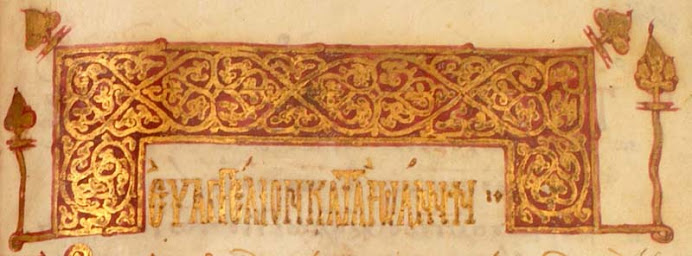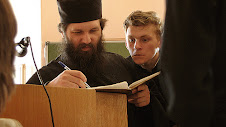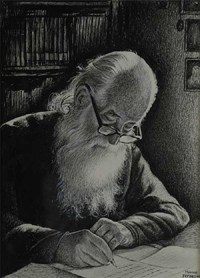 The clearest short statement of the teachings of St Gregory Palamas and the Hesychasts can be found in "The Declaration of the Holy Mountain in Defence of Those who Devoutly Practise a life of Stillness," otherwise known as the "Hagiortic Tome." An English translation can be found in the fourth volume of the Philokalia, pp. 418-425.
The clearest short statement of the teachings of St Gregory Palamas and the Hesychasts can be found in "The Declaration of the Holy Mountain in Defence of Those who Devoutly Practise a life of Stillness," otherwise known as the "Hagiortic Tome." An English translation can be found in the fourth volume of the Philokalia, pp. 418-425.St Gregory Palamas wrote the Declaration in 1340 during the latter stage of his dispute with Barlaam, though the Calabrian is nowhere mentioned by name. The issues raised in the Declaration should therefore be considered in the light of St Gregory Palamas' ongoing dispute with Barlaam, though it should be noted that there is no mention of their earlier disagreement concerning the use of apodictic reasoning as a theological method, as was raised in their exchange on the Latin teaching on the procession of the Holy Spirit. Nor is there any mention of somatopsychic practice, though the role of the body in prayer is emphasized. It appears their earlier disputes over these issues were not of sufficient importance to necessitate a conciliar, doctrinal refutation. Rather, the Declaration focuses on the Hesychasts' claim of the reality of man's participation in God's uncreated, deifying energies.
The structure of the Declaration is as follows: first a Prologue in which the key issues are set forth; then a series of six statements, each condemning a doctrinal assertion while offering a positive teaching; then a statement by the Athonite monks declaring the uniformity of these teachings with Holy Tradition and explicitly supporting the work of Palamas; a series of signatures endorsing the text; and finally the signature of the local bishop, declaring a break in communion with those not in agreement with the Declaration.
At the risk of oversimplification, we could summarize the argument as follows: The Hesychasts, exercising a prophetic role, have been initiated by experience into mysteries of God that may appear impious to those without such experience. This experience of deifying Grace is communicated by means of a vision of Divine Light. This deifying Grace 1) is uncreated; 2) is brought about by supernatural illumination; 3) is experienced by an embodied intellect (nous); 4) is manifest in a Light that has real being and surpasses comprehension; 5) "issues" from God as Energies having uncreated reality; 6) is participated in by the body as an eschatological foretaste.
St Gregory Palamas is defending the reality of the revelation of the mysteries of the Spirit to those purified through virtue and deified by the uncreated Energies or Grace revealed in the vision of the Uncreated Light and participated in by both intellect (nous) and the senses and communicated to the body.
But the heart of the Declaration is not so much an abstract doctrinal assertion as it is a defense of the experience of the Hesychasts. Throughout the document we see that the true source and demonstration of the doctrinal assertions is the prophetic, mystical revelation that is actually experienced by mystical initiation. Those who have not had this experience should at least trust those who have. Those who object to the teachings of the Hesychasts lack proper revarance, have not been purified by virtue, and are stuck in ignorance. Like the Jews of old, they will accuse the new prophets of blasphemy. Those Athonites who signed the Declaration were convinced of its truth not only from its conformity to Scripture and the teaching of the Fathers, but from their own experience as well.
We may then conclude that St Gregory Palamas, in the "Hagioritic Tome," is first and foremost defending the experience of the Hesychasts, for the specific theological claim he is defending – the reality of the deifying vision of the Uncreated Light by both body and intellect (nous) – is experiential.









No comments:
Post a Comment